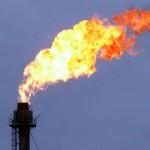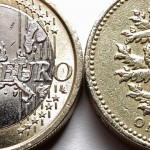Australian dollar was on frail positive territory against its US peer on Thursday, following the release of non-manufacturing activity report out of China.
AUD/USD rose to a session high at 0.9402 at 2:00 GMT, after which consolidation followed at 0.9391, gaining 0.04% for the day. Support was likely to be received at September 30th low, 0.9280, while resistance was to be met at October 1st high, 0.9434.
Chinese National Bureau of Statistics reported that activity in countrys non-manufacturing sector increased in September, as the corresponding PMI advanced to a reading of 55.4 from 53.9 in August.
This report came out two days after the official data regarding Chinese manufacturing activity, as the index, gauging it, showed also a slight improvement in September. The data is of certain significance for the Australian currency, because China is Australias largest export market.
At the same time, the Australian Industry Group (AIG) said that its Australian Performance of Services Index (PSI) improved in value in September, reaching 47.1, or the highest point since March, as a month ago the index stood at 39.0. Values below the key level of 50.0 are considered as a signal for contraction in activity. The PSI remained in this zone for a 20th consecutive month. Data showed that better sales results in the sector, new orders and shipments were the major contributing factors behind the improved performance of the index. However, decreased investing activity in the sector of mining, relatively weak consumer spending and cheaper import were still causing negative influence upon consumer and business demand for services in the country.
In addition, Westpac Banking Corp. (WBC) has changed its rate forecast, as it now projects that the Reserve Bank of Australia (RBA) will reduce its benchmark interest rate in February and May. WBC had previously predicted a 25-basis-point cut in November this year and another one in February 2014.
Meanwhile, appetite for high-yielding currencies, such as the Aussie, was curbed due to the partial US government shutdown. In an interview, following the close of US markets on Wednesday, President Barack Obama said that Wall Street should be “concerned” about the effects of the shutdown. A partial shutdown lasting one week would probably erase 0.1% of the economic growth in the United States, according to the median estimate of experts, participated in a survey by Bloomberg. “The longer the U.S. government is shut down, the bigger the impact on gross domestic product,” said Besa Deda, the chief economist at St. George Bank Ltd. in Sydney, cited by the same media. “It does provide a weaker global growth backdrop for the Aussie dollar, and that’s negative for the currency in a broader sense.”
The US dollar lost ground against peers yesterday, after a report by Automatic Data Processing Inc. (ADP) revealed that the private sector in the United States added 166 000 new job positions, which remained below expectations of 175 000 new jobs. ADP revised down August’s result to 159 000 jobs from 176 000 previously.
Elsewhere, the Aussie was slightly lower against the euro, with EUR/AUD cross gaining 0.06% on a daily basis to trade at 1.4481 at 6:48 GMT. AUD/NZD pair was advancing 0.20% to trade at 1.1295 at 6:50 GMT.





